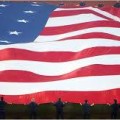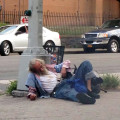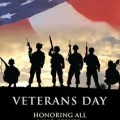A Difficult Task: Realizing Who Our Military Veterans Are
Who or what is a United States military veteran? The answer depends upon who you ask and how you phrase the question.
According to a 2012 Congressional Research Service Report, “a veteran is defined as a ‘person who served in the active military, naval, or air service, and who was discharged or released therefrom under conditions other than dishonorable.’” Did you know that? I didn’t always.
Three years ago, I was at a Veterans Day event sponsored by P.S. 108 in our district. At the event, someone I know came out of the closet and confided in me that he was a U.S. Army veteran. Like some to a lot of veterans I know or have known, he did not wear a cap, t-shirt or other article of clothing stating his service, although there were plenty of others in attendance who did. An attorney, this man was dressed in a suit.
It was an odd experience. I later asked myself why he was just now coming out. He told me on the side that he had been a recruiter in the late 1970s.
In 2011, when I became the district manager of our community board, I discovered another veteran in our midst. The treasurer of our board had served in the Marine Corps in Vietnam. You wouldn’t know this by meeting him. He’s generally a reserved and soft spoken fellow. He’s been serving on our board since 1990. So, I found it odd that our chairman at the time, who had been our chairman on and off for approximately twenty-five years and who had been on the board since 1979, did not know that his own treasurer was, like him, a veteran.
At the November 2016 joint Borough Board and Borough Service Cabinet meeting, an elected official staffer raised the issue of identifying veterans, i.e. the difficulty involved. I responded by saying that it’s difficult, but not entirely. We need to start by looking in the mirror and asking our own people, community board members for example, if they have ever served in the military. I learned that one should not ask a person if he or she is a “veteran” because most people don’t know what a veteran actually is. As stated above, that bit of ignorance included me at one point. I erroneously thought that being a veteran involved an overseas deployment of some sort.
As Ted Puntillo, director of Veteran Services for Solano County, California, said in 2013, “Some people with an honorable discharge do not think they are a veteran because they only served for two years, did not serve in combat or were not injured in the service. Women and people who served honorably in the National Guard and Reserves are often unsure of their status.”
Another part of the problem is that some veterans don’t want to remember their time in the military and/or are very protective of prying minds. This happens often with combat vets and others who had not so pleasant experiences in the military such as those who were sexually assaulted. (According to Frontline in 2013, more than half of the military’s sexual assault victims were men.)
On our board’s website, we list our past and present board members. On both lists, I’ve put an asterisk next to the name of each known “Veteran of the United States Armed Forces.” One of our board members, who had served in combat, was immediately suspicious of this. Naturally, I had to obtain his permission for the asterisk before I put one next to his name. I explained to him that it would not give out any personal information such as where, when and with what unit he had served. I simply wanted to recognize his general service, along with every other veteran on our board, because it’s something I felt, and still feel, we should highlight and appreciate. This board member suffered from posttraumatic stress. So, there was a bit of back and forth before he consented. I had to make it very clear to him that he would not receive special treatment; that he, who all too often remembered what he considered to be the real heroes of this country (his fallen comrade in arms), would be treated just as every other veteran member of our board.
Some people forget that Community Board 11 represents over 113,000 residents. I thought it was important consequently to show a bit of diversity by flashing the most miniscule amount of military service some of our board members possess. Remember that veterans are a minority and largely have been. A more privileged minority nowadays compared to when our Vietnam, Korean War and World War I service members were discharged, which is quite possibly why that former recruiter referenced in the third and fourth paragraphs above just came out after thirty years.
The Bronx Borough President’s Office asks community board member applicants if they have “ever served or are currently serving in the United States Armed Forces or military,” which is the correct way to ask someone if they’re a veteran (not “Are you a veteran?”). It is my hope that all of the City’s community boards will take the appropriate steps in recognizing their own veteran populations, whether they follow the example we have set for them with the asterisk, and in some cases a bio, or the example other boards have set by creating a veterans services committee of some sort.
Jeremy Warneke
District Manager
Community Board 11
1741 Colden Avenue
Bronx, NY 10462

















Follow Us